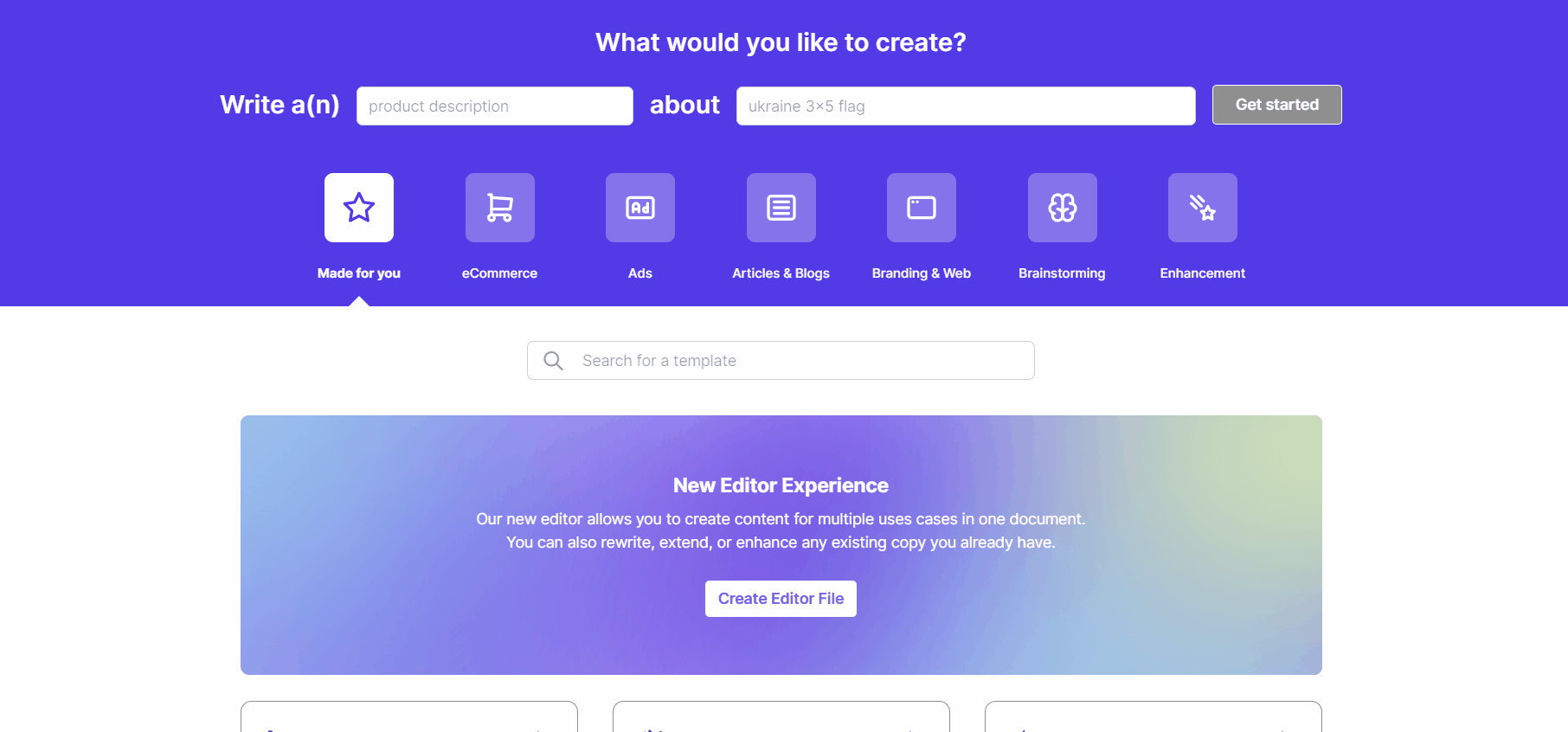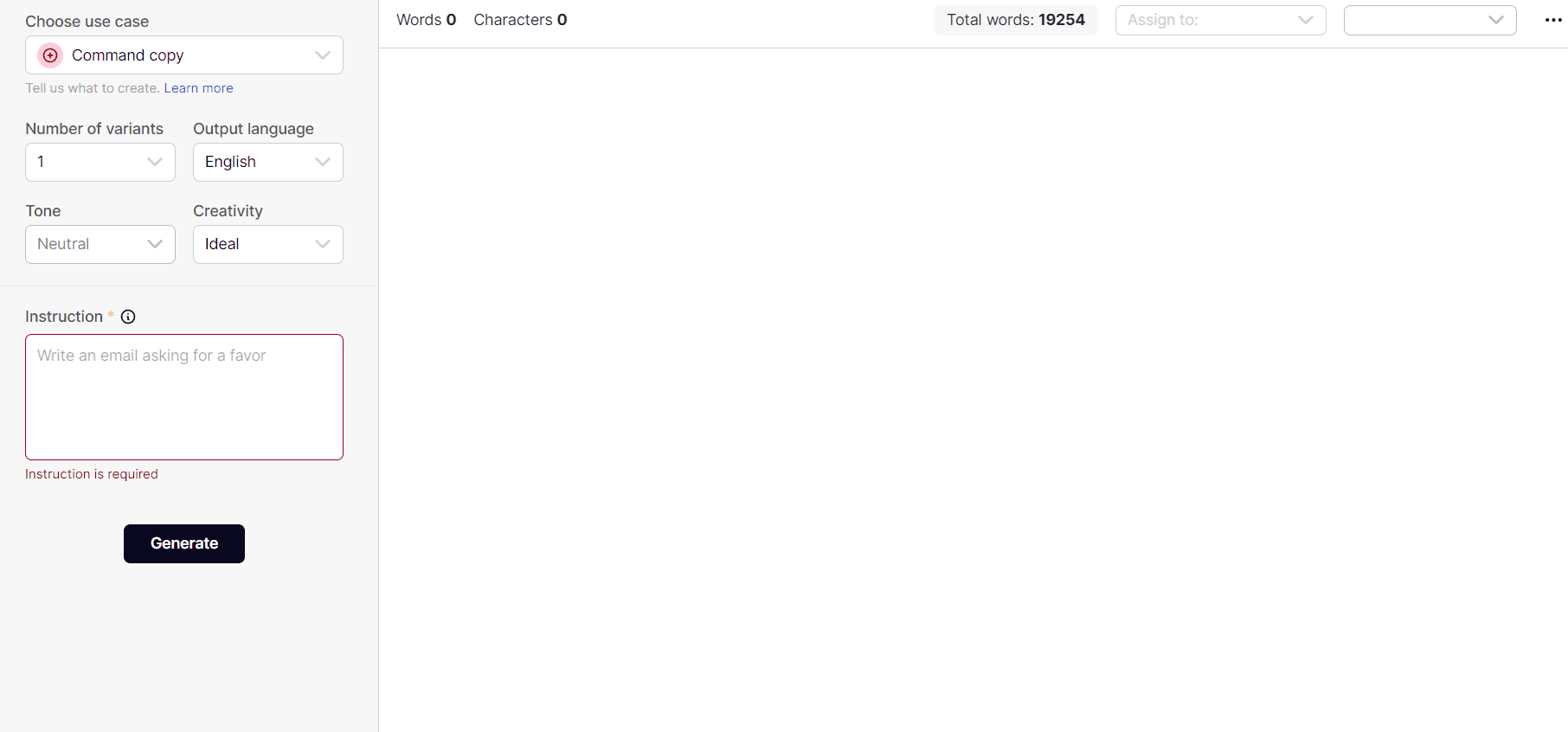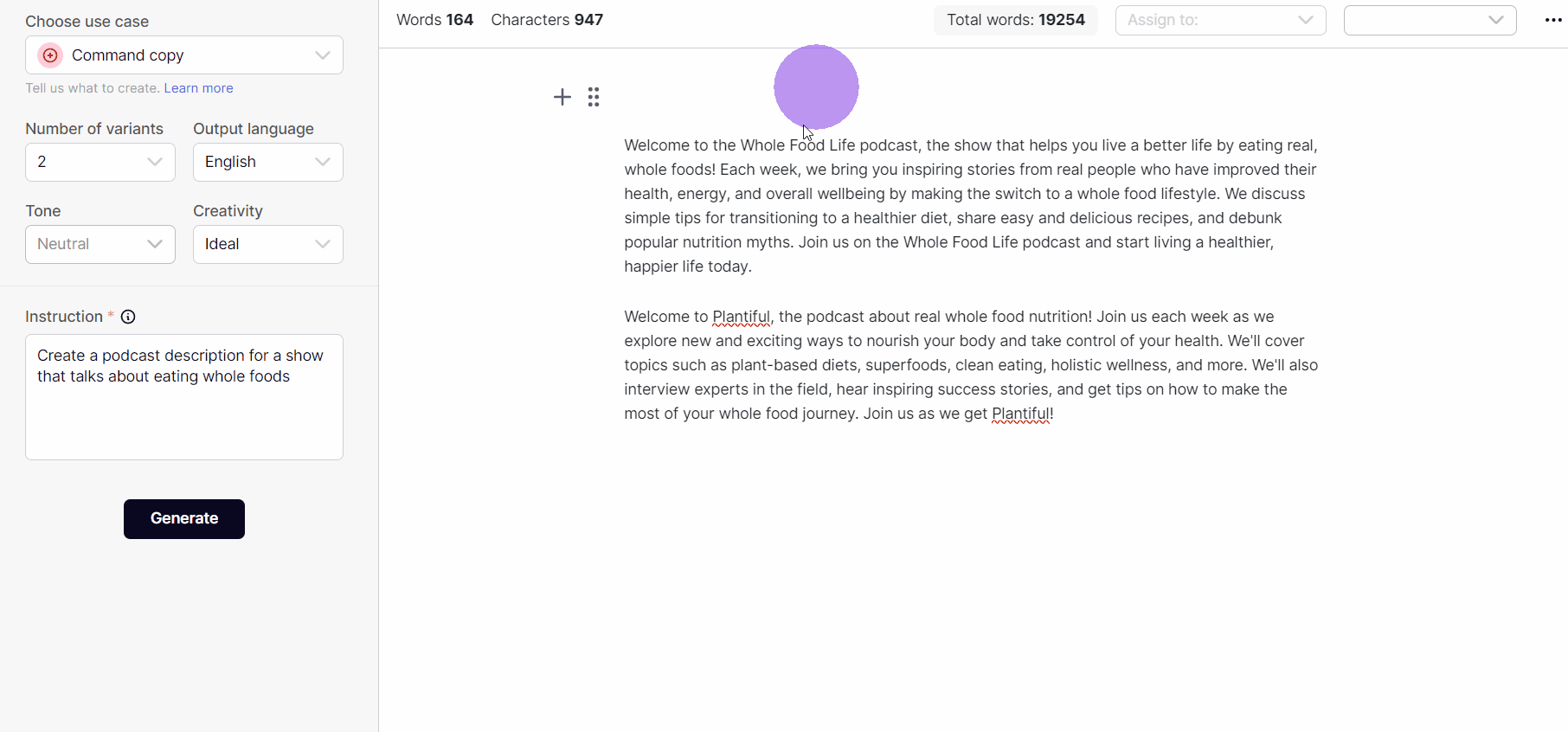As of January 2023, there are over four million podcasts out there — with millions of podcasts available to listen to, how will you convince listeners to choose your podcast show? This is why an engaging and informative podcast description matters. Writing a podcast description can be a tricky task, because it needs to capture the attention of potential listeners while conveying the valuable information they will find inside.
Fortunately, modern technology has made this task much easier. Artificial intelligence, AI for short, can take your podcast description to the next level by providing an engaging and informative narrative that captures your listener’s curiosity in an instant.
In this article, we will explore how to write an engaging podcast description that stands out from the crowd with the help of AI.
What is a podcast description?
Podcast descriptions provide listeners with an overview of what the podcast show is about, who the hosts are, and what topics or themes they cover. It may also include information about the podcast’s format and release schedule.
The podcast description is usually found on podcast directories and platforms, and it plays an important role in attracting new listeners. It should be clear, concise, and compelling, and give potential listeners a good idea of what they can expect from the podcast. Think of it this way: if books have a synopsis that tells the reader what the book is about – that is essentially what a podcast description does.
Take note that a podcast description is different from a podcast summary. The description is about the whole show while the summary is about a specific podcast episode.
What makes a good podcast description?
Start with a strong hook
The hook is the first sentence of your podcast description and is crucial in grabbing the attention of your potential listeners – this is what will make them pause and read your entire podcast description.
To create a strong hook, you need to think about what makes your podcast unique and interesting. Start by asking yourself questions such as:
- What is the main topic of your podcast?
- What sets your podcast apart from others in my niche?
- What interesting, unique or surprising facts or stories can you share about your podcast?
Once you have a clear understanding of what makes your podcast unique, you can craft a strong hook that highlights those qualities – also, remember to use descriptive language.
Here are some examples of effective podcast hooks:
- “Join us for a wild ride through the world of true crime, as we uncover the most shocking and mysterious cases you’ve never heard of.”
- “Looking for a new way to learn about history? Our podcast explores the lesser-known events and figures that shaped the world we live in today.”
Notice how each of these hooks is attention-grabbing and speaks directly to the listener’s interests and needs. By starting your podcast description with a strong hook, you can pique the interest of potential listeners and convince them to give your show a try.
Speak in your audience’s language
Podcasting is one of the most intimate channels of communication since the set-up is similar to having a one-on-one conversation; that’s why language matters. When writing your podcast description, it is important to consider your audience and speak in a language that resonates with them. Use words and phrases that your audience uses and understands.
One way to ensure that you are speaking in your audience’s language is to conduct research on the demographics of your target audience. This can include factors such as age, gender, geographic location and interests. By understanding your audience’s characteristics, you can tailor your language to better connect with them.
For example, if your target audience is primarily made up of young adults, you may want to use more informal language and slang terms that are common among that age group. On the other hand, if your audience is more professional and business-oriented, you may want to use more formal language and industry-specific terms.
Another way to speak in your audience’s language is to use the same tone and style that they use in their everyday lives. This can help to establish a personal connection with your audience and make your podcast feel more relatable. For example, if your podcast is focused on pop culture and entertainment, you may want to use a more lighthearted and conversational tone in your description.
In a nutshell, speaking in your audience’s language is essential because it helps you to connect with them on a deeper level and establish a personal connection. By using words, phrases, and tones that your audience is familiar with and comfortable with, you can create a more engaging and compelling podcast description that resonates with your target audience.
Include keywords for SEO
Keywords are basically words or phrases that people use to search for podcasts on search engines (like Google) or podcast directories and platforms (like Podbean, Spotify, Apple Podcasts and Google Podcasts). Including relevant keywords in your podcast description can help improve your visibility in search engine rankings and podcast directories, making it easy for potential listeners to find your show.
To find relevant keywords for your podcast, you can use keyword research tools (like Google AdWords Keyword Planner or SEMrush). These tools will help you identify keywords that people are using to search for podcasts in your niche, as well as the level of competition for each keyword.
In addition to including keywords in your podcast description, it is important to use them strategically – avoid stuffing your description with too many keywords, as this can make it appear spammy and could hurt your search engine rankings. Instead, use your keywords naturally and incorporate them into your description in a way that makes sense and provides value to your potential listeners.
Name your hosts (if it’s relevant to the show)
Including the name of your hosts in your podcast description hits two birds with one stone, especially if your hosts are well-known figures:
- Marketing advantage
- SEO benefits
First, featuring the names of your hosts in your podcast description can provide a marketing advantage by leveraging their existing popularity, reputation, personal brand and influence.
If your hosts are well-known figures in your niche or industry, including their names in the podcast description can attract their fans and followers to your show. This can help expand your reach and grow your audience more quickly.
Second, including the names of your hosts in your podcast description can provide an SEO benefit by improving your podcast’s discoverability on search engines and podcast directories.
This comes handy if your hosts have a strong online presence, as their names are likely to be searched for by potential listeners interested in your podcast’s topic or niche.
By featuring your hosts’ names in your podcast description, you increase the chances of your podcast appearing in search results for queries related to their names. This can drive more traffic to your podcast’s page and increase the likelihood of listeners subscribing to your show.
It is important to note that featuring your hosts’ names in your podcast description may not be necessary or relevant for all types of shows. If your podcast is not personality-driven or if your hosts are not well-known figures, featuring their names may not add much value to your show.
Pay attention to length
A well-written description should be concise and to-the-point, while also conveying the key information about your podcast.
There is no one-size-fits-all rule for how long a podcast description should be but as a general guideline, a podcast description should be around 150-200 words, which is enough to provide a brief summary of your show and entice potential listeners to give it a listen.
It’s important to keep in mind that most podcast directories and platforms display only the first few lines of your description, so make sure to prioritize the most important information in the first sentence or two, a.k.a. the hook.
Add a call-to-action
Finally, be sure to include a call-to-action (CTA) in your podcast description. It is a powerful way to encourage your listeners to take a specific action, such as subscribing to your podcast, leaving a review, or visiting your website. A well-crafted CTA can help drive engagement, build relationships with your audience, and ultimately grow your podcast’s reach and influence.
When creating a CTA for your podcast description, it is important to be clear and specific about what you want your listeners to do. For example, instead of simply asking them to “support your show,” you could ask them to “subscribe to our podcast on Podbean to never miss an episode.” By providing a specific and actionable task, you make it easier for your listeners to follow through and take the desired action.
Another effective strategy is to offer an incentive or reward for listeners who complete your CTA. This could be something as simple as thanking them on a future episode or responding to their reviews. By providing a clear benefit for taking action, you can further motivate your listeners to engage with your podcast and build a deeper relationship with your brand.
How to write an engaging podcast description using AI
Writing an engaging podcast description can be a challenging task especially with the brainstorming, researching, drafting and everything in between, but with the help of AI-powered tools, it can be easier.
Copysmith is an AI content creator that generates engaging and informative podcast descriptions in an instant. Let’s take this AI writer for a spin so you can see how it can take care of the grunt work.
First, select Editor File – this will give you a document-like interface. Very handy so you can easily compare and contrast which podcast description is the best for you.

Second, tell the AI what you want it to write. For best results, include the term “podcast description” and the details of your show. You can also specify the number of variants, language and creativity of the description.

Third, if you’re satisfied with the AI-generated product description, you can keep it as it is or you can modify it.
Also, keep in mind to check the number of words and readability score. Again, it should not be more than 150-200 words and is easy to read. A podcast description that is short, concise and easy to read leads to better engagement.

Now, let’s generate some more podcast descriptions!
We asked Copysmith to generate three podcast descriptions for a history show. The first one is the best among the three especially the show title it generated is attention grabbing:
“Welcome to “Historical Hijinks,” your source for the strangest and most fascinating stories from the past! Join us as we explore the obscure and often forgotten tales of bygone days. From lost civilizations to strange customs and wacky inventions, we’ll take a fun and entertaining look at the history that often gets overlooked. So tune in, and get ready to be transported back in time!”
Here’s another example of an AI-generated podcast description. Among the four descriptions centered around the life story of athletes, this is the most inspiring:
“We all love to cheer on our favorite athletes, but what do we know about who they are and what has shaped them into the amazing people they are today? On The Inspiring Life Story of Athletes, we’ll talk to some of the world’s most renowned and successful athletes about the events and people who have inspired them to become the champions they are today. Through candid conversations, we’ll learn about their early days and the people who helped them to become the stars they are. So, join us for an inspiring journey into the lives of some of the world’s greatest athletes.”
By using AI-powered tools to write your podcast description, you can make the writing process easier and make sure that your description is optimized for impact and engagement. Although you need to keep in mind that these tools should be used as a supplement to your own writing and creativity, rather than a replacement for it. Ultimately, it is up to you as the podcast creator to craft a description that accurately represents your show and appeals to your target audience.
Takeaway
Remember that your podcast description is often the first interaction that potential listeners will have with your show, so it is important to make a good impression – be engaging and informative. By following the tips and strategies outlined in this blog post and using the power of AI to optimize your writing, you can create a podcast description that stands out from the crowd and helps your show reach its full potential.
Finally, do not be afraid to experiment and try new approaches. Writing a podcast description is an ongoing process, and what works best for your show may change over time. By staying open to new ideas and feedback, and continually refining and optimizing your description, you can make sure that your podcast remains fresh, relevant, and engaging for your audience. Good luck and happy podcasting! Sign up to Copysmith today and write an engaging podcast description for free with your 14-day unlimited free trial. No credit card required.
